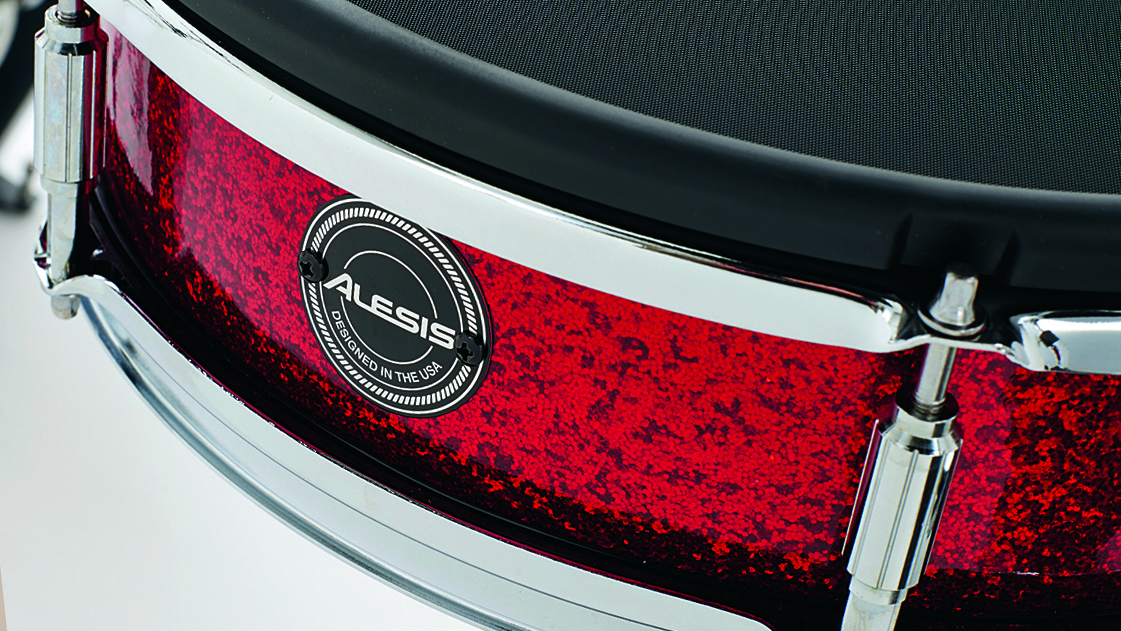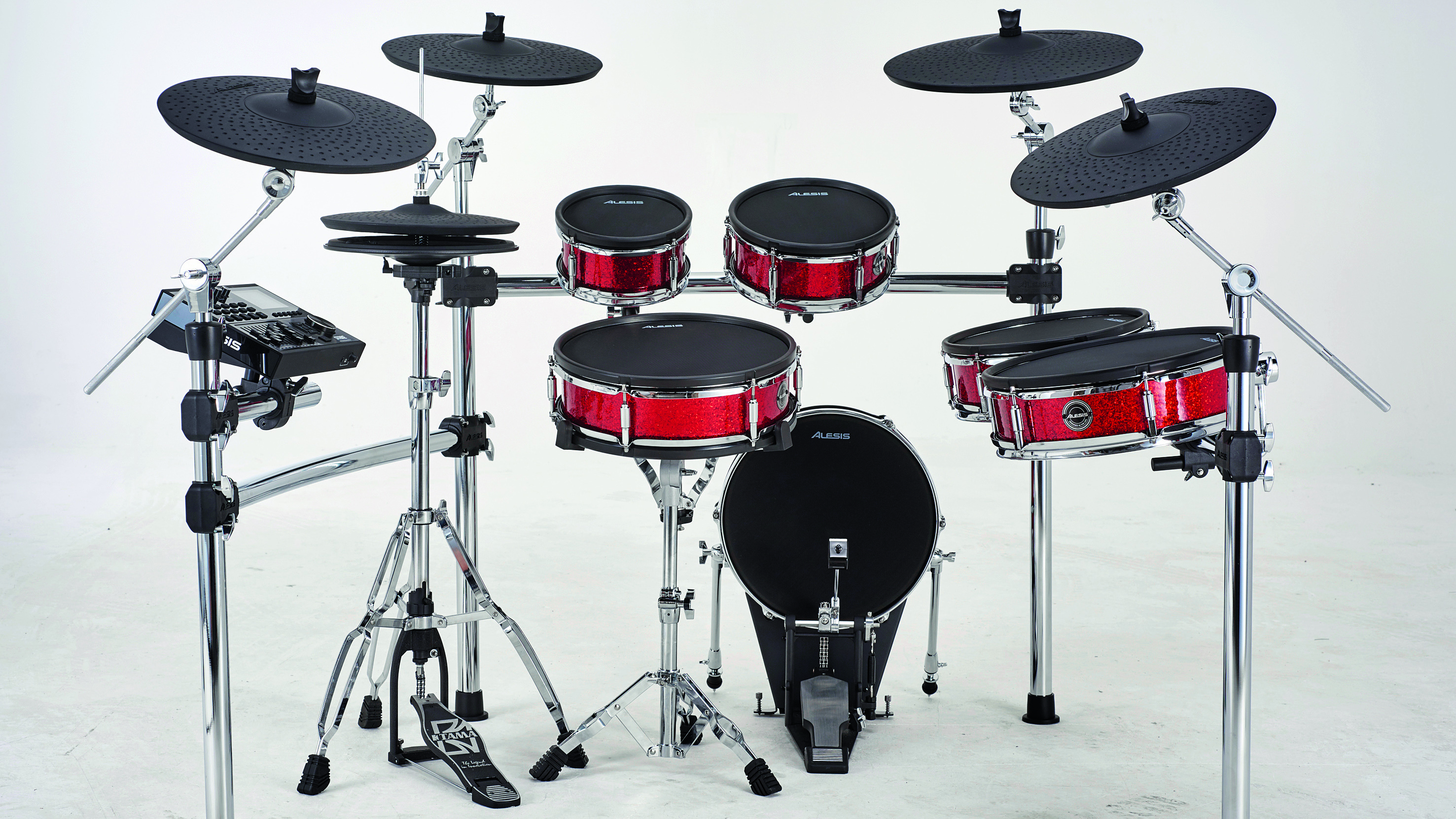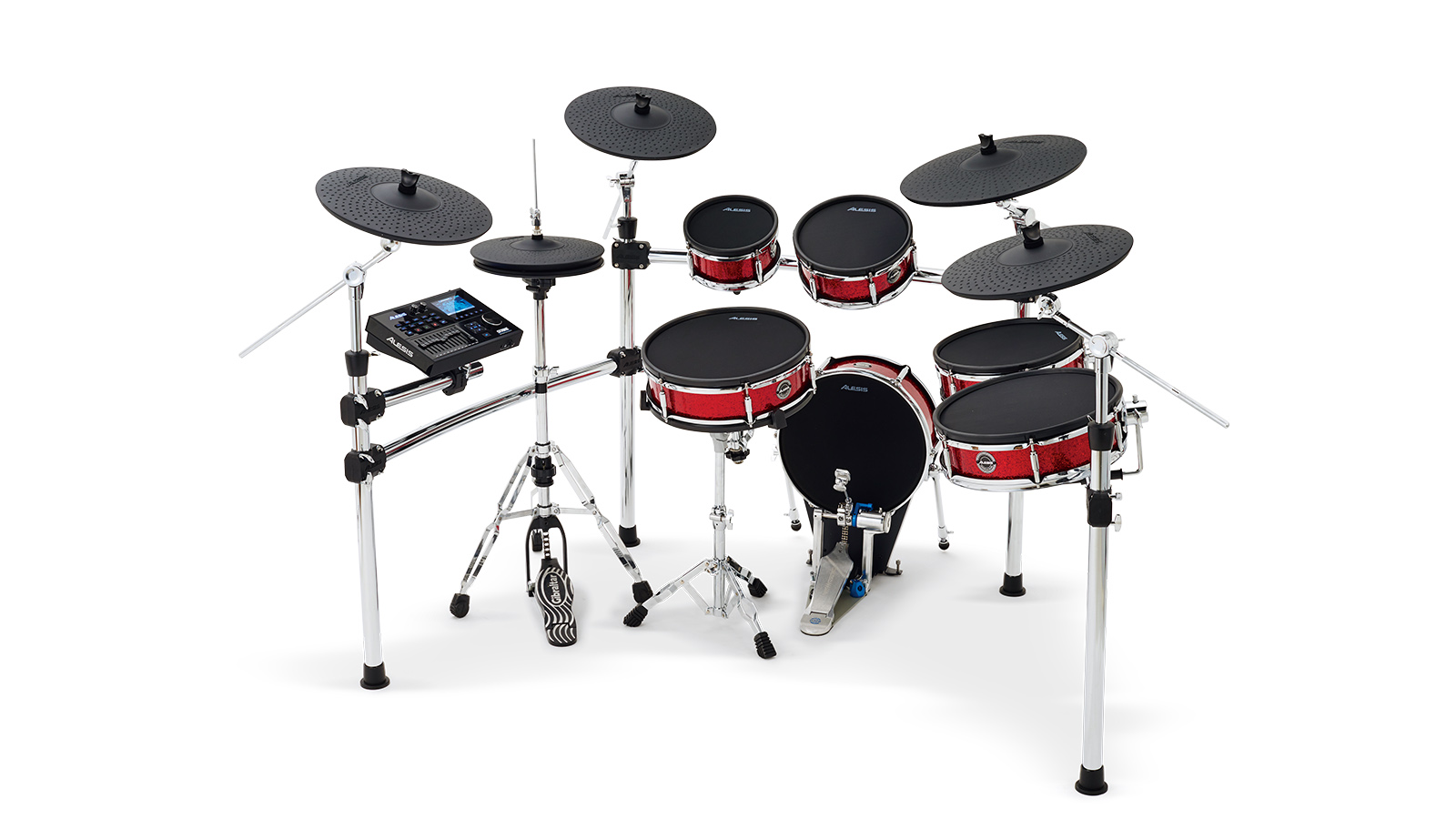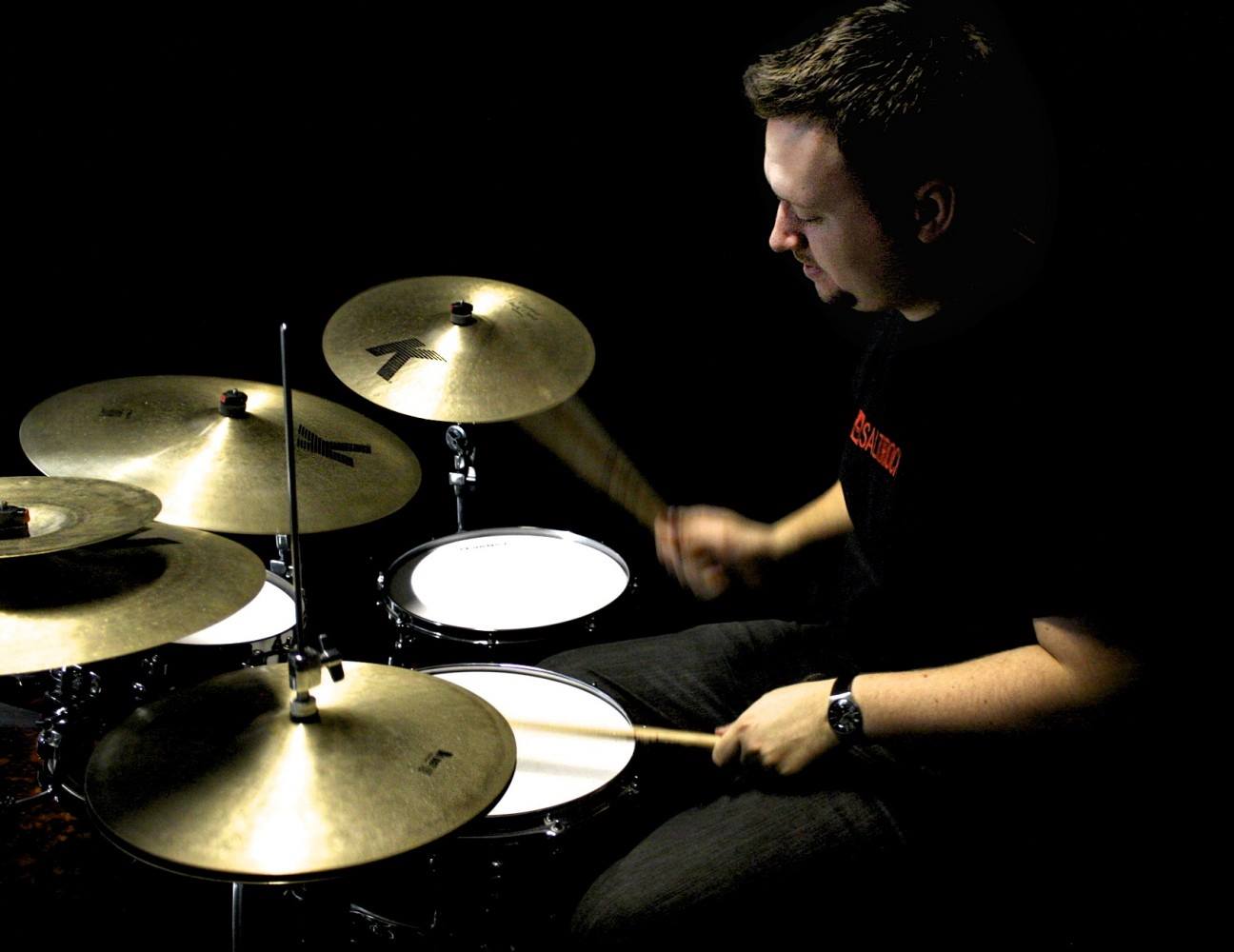MusicRadar Verdict
The Strike Pro may not be perfect but it does represent an unquestionably impressive amount of gear for the money. But be prepared for a lot of tinkering around to customise your setup.
MusicRadar's got your back
Alesis is no small fish in the electronic drum set world and the company produce a vast range of e-kits to meet the needs of most types of drummer.
Alesis’ electronic percussion lines include the Command, Forge, Nitro, DM10 and the recently-reviewed Crimson, with the Strike Pro wearing the crown as the flagship model.
Retailing at little over two thousand pounds and three thousand dollars, we’re interested to see what this massive kit can offer for a relatively low and competitive price.
Build
The 11-piece Strike Pro is comprised of 8", 10", 12" and 14" tom pads, a 12" snare pad and 14" kick pad. It also includes 12" hi-hat pads, a whopping 16" ride cymbal pad and three 14" crash cymbal pads. All drum pads are dual-zone (except for the bass drum), as are the chokeable crashes. The large ride pad has three zones, which offer separate control over the bell, bow and edge.
The sleek-looking module features a large 4.3" colour display, physical mixer, mini-jack aux input, USB with MIDI capabilities (and standard 5-pin MIDI in/out), SD slot with included card (up to 64GB), ¼" headphone out and left and right main output jacks. There are also eight direct-out jacks, which allow pre-fader and pre-effect signal to be sent separately from the master output. The kit is supplied with a large cable loom that contains all relevant trigger input connections for the 13 stereo jack inputs.

The module is equipped with over 100 pre-programmed kits and has the on-board capacity to store up to 200 user kits, in addition to an unlimited number of externally-saved kits. The unit features an on-board effects engine and in-built sampling capability that allows the real-time recording and editing of audio via the aux input.
Perhaps most impressive is that the Strike Module accepts user samples not only for looping or backing purposes but for actual drum kit creation – a feature that has only recently been introduced to top-of-the-line e-kits. In an attempt to make this process as straightforward as possible, the Strike module connects with included companion Strike Software Editor, which makes a high level of kit customisation possible, right from your computer desktop.
The heavy-duty frame is exceptionally stable and locks together easily thanks to slotted poles. There is a decent snare stand supplied but an additional hi-hat stand and bass drum pedal will be required to complete the setup.
Some real effort has been made with the Strike Pro to make the drums look as realistic as they possibly can; not only do the pad diameters increase as you move around the kit, but the shells are finished with a red sparkle wrap and use triple-flanged hoops over the mesh heads. Each ‘shell’ even has funky-looking chrome tube-style lugs.
It’s worth mentioning that the Alesis Strike kit, which is the next model down, shares a lot of similarities with the Strike Pro. In fact, it’s basically the same kit and module, less two 14" cymbal pads and the large 14" tom pad. With the Strike retailing at £1,699.99 and the Pro at just £400 more, it seems logical to go for the Pro if budget allows.
Just in case anyone was having trouble making up their mind, Alesis has seen fit to offer an expansion pack (£449.99), which not only includes the aforementioned items but also some racking to accommodate the extra pads – ideal if you buy the standard Strike and you subsequently want to upgrade.

Hands On
The inbuilt samples are of a good quality and the sheer number of kit presets take a long time to explore. Kits start with standard acoustic drums and highlights include an addictive Rosanna shuffle kit and a fun nod to Phil Collins classic ‘In The Air Tonight’ sound.
There are a number of electronic sounds too, such as the EDM kit, which really showcases the dual-zone pads with the addition of melodic hits on the rims. This approach can be enhanced further by delving into the module’s ability to blend multiple instruments on one trigger.
When it comes to loading custom samples, it’s a breeze to drop backing loops onto the included SD card. These will then show as a list within the ‘sample’ menu. However, using the sounds within kits is a totally different story.
To do this, the Strike Software Editor must be used to convert the samples so that they can be recognised as instrument files on the module – although this really should be a fairly painless process once you’ve familiarised yourself with the super in-depth software. Once converted, it then becomes possible to assign each sample within a specific velocity range for a more natural playing experience.
Despite some genuinely great functionality inside the Strike module, I also experienced some teething issues. Firstly, the kit did not play well straight from the box and it required a lot of adjustment for my playing style. After a considerable amount of time tweaking with the bass drum, I was still experiencing some unwanted re-triggering. The pads, although they were responsive, didn’t always provide a smooth dynamic range and could at times feel a little clunky.
In addition, the cymbal pads do not choke easily and they require an unnaturally firm pinch to work. The inbuilt FX are certainly a welcome addition but they take a surprisingly long time to load when switching between the kits (as do the samples), which means real-time patch changing is pretty much out of the question.
- Explore more of the best Alesis electronic drum sets
Tom is a professional drummer with a long history of performing live anywhere from local venues to 200,000 capacity festivals. Tom is a private drum tutor, in addition to teaching at the BIMM Institute in Birmingham. He is also a regular feature writer and reviewer for MusicRadar, with a particular passion for all things electronic and hybrid drumming.
“Every note counts and fits perfectly”: Kirk Hammett names his best Metallica solo – and no, it’s not One or Master Of Puppets
Ranked: Bon Iver's albums, from Sable, Fable to For Emma, Forever Ago
“Its mission is simple: unleash the power of any amplifier or line-level source without compromise”: Two Notes promises a “watershed” in tube amp control with the Torpedo Reload II











